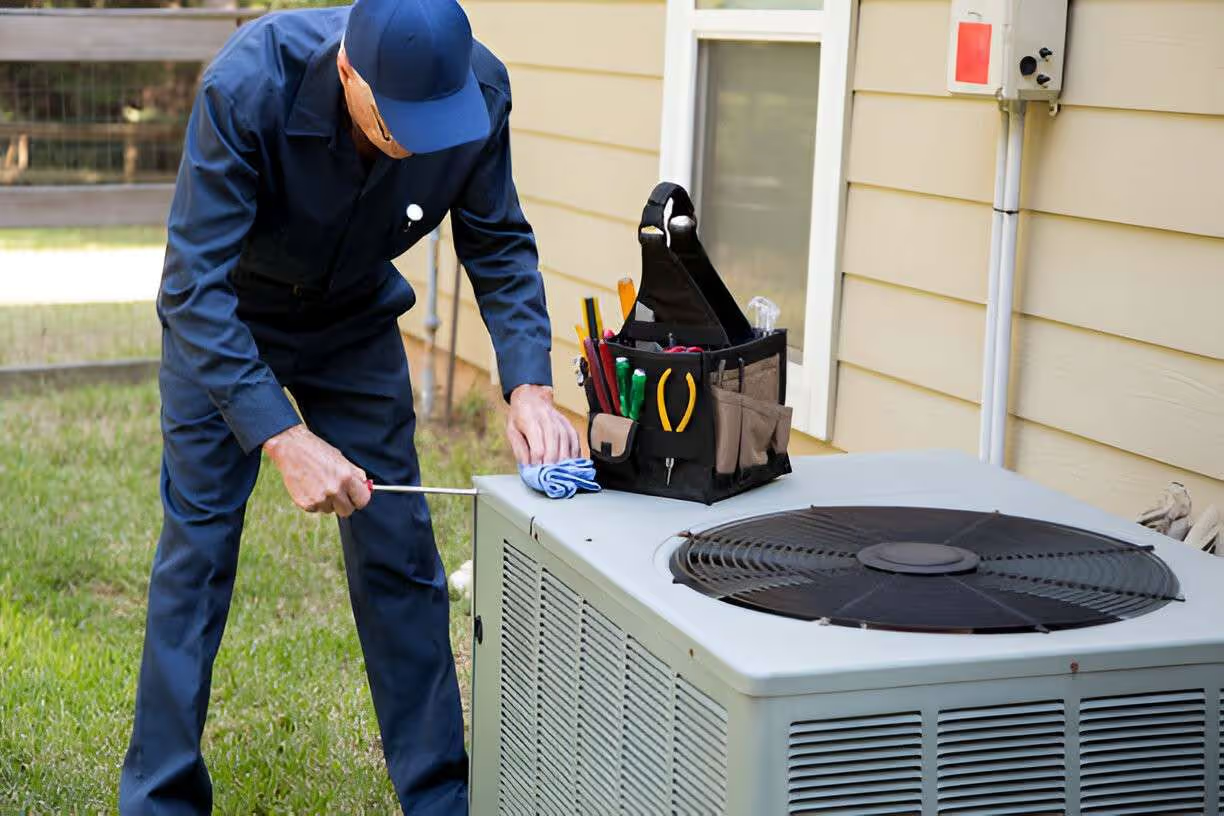AC Replacement in Plant City, FL


When to replace your AC versus repair: key indicators
Knowing whether to repair or replace is a common bottom-of-funnel concern. Consider replacement when one or more of the following apply:
- System age: Older systems become less efficient and more costly to repair. Systems near the end of their expected service life often justify replacement.
- Frequent breakdowns: Multiple repairs in a short period typically indicate failing components and rising lifetime cost.
- Major component failure: Compressor failures or a cracked heat exchanger are often more practical to replace than repair.
- R-22 refrigerant issues: If your system uses R-22 (Freon), availability is limited and costly due to phased regulations, making replacement a practical choice.
- High energy bills: A properly sized, high-efficiency unit can reduce monthly cooling costs, especially important in Plant City’s climate.
- Comfort problems: Uneven cooling, poor humidity control, or persistent indoor air quality issues may indicate the need for a modern system designed for your home.
- Home upgrades or additions: If you’ve added square footage or remodeled, the original system may be undersized and need replacement to meet the new load.
Common AC replacement issues in Plant City, FL
- High indoor humidity and uneven cooling due to undersized or aging systems.
- Corrosion or coil degradation from salt air and humidity affecting coastal-adjacent areas.
- Increased evaporator and condenser wear from long running hours during hot months.
- Older systems still using phase-out refrigerants or lower SEER efficiency ratings.
AC replacement process: what to expect
Replacing an AC system involves several coordinated steps. Here's a clear outline so you know what replacement in Plant City, FL entails.
1. Assessment and load calculation
A licensed technician performs a detailed load calculation (Manual J or equivalent) to determine correct system capacity. Proper sizing takes into account Plant City-specific factors: insulation, window orientation, attic ventilation, local humidity, and landscape shading. Oversizing leads to short cycling; undersizing won’t fully meet cooling needs.
2. Equipment selection and sizing
- Choose a system sized precisely to your home’s cooling load.
- Compare system types: split systems, heat pumps, and high-efficiency condensers tailored for Florida climates.
- Consider features that matter in Plant City: variable-speed compressors for humidity control, multi-stage cooling for consistent comfort, and corrosion-resistant coils.
3. Energy-efficiency comparisons
- Look at SEER and HSPF ratings for cooling and heating efficiency. Higher SEER equals better efficiency and lower operating costs in Plant City’s long cooling season.
- Evaluate lifecycle savings rather than upfront cost alone. Newer high-efficiency units often recoup investment through lower energy use and improved reliability.
4. Removal of old equipment and disposal
- The old outdoor unit and indoor components are safely disconnected. Refrigerant handling follows current regulations; reclaimed refrigerant is disposed of per law.
- Debris and old components are removed and recycled when possible to meet environmental and local code requirements.
5. Installation and timeline
- Typical installations range from a single day to a few days depending on complexity: duct modifications, electrical upgrades, or permit timelines can extend the schedule.
- Key install steps: mounting the new condenser, replacing or retrofitting the evaporator coil, refrigerant lineset work, electrical hookups, thermostat installation, and system startup.
- Permits and inspections: most municipalities require permits and a final inspection to ensure code compliance.
Financing and rebate options in Plant City
Replacement cost can be managed through several financing and incentive options:
- Manufacturer or dealer financing plans that spread payments over time.
- Federal tax credits or energy efficiency incentives for qualifying high-efficiency systems (check current program eligibility).
- Utility rebate programs and seasonal incentives available from regional electricity providers for upgrading to high-efficiency equipment.
- Manufacturer rebates on specific models during promotional periods.
When exploring financing or rebates, confirm eligibility, required documentation, and whether the incentive requires specific equipment or professional installation certification.
What affects cost and what warranties to expect
Factors that influence the total investment:
- System size and efficiency rating.
- Complexity of installation: ductwork modifications, electrical upgrades, or structural work.
- Need to replace indoor coils or add air quality accessories (UV lights, dehumidifiers, filtration).
- Permit and inspection fees.
Warranties to review:
- Manufacturer parts warranty: often covers major components like compressors for a set period; registration may extend coverage.
- Labor warranty: covers workmanship for a defined period provided by the installer.
- Extended warranties: available through manufacturers or third parties for additional coverage.
Always get warranty terms in writing, including what voids coverage and any maintenance requirements.
Post-replacement testing and maintenance advice
A thorough post-installation checklist ensures optimal performance:
- Verify refrigerant charge and measure subcooling/superheat.
- Test airflow and static pressure to confirm duct performance.
- Calibrate thermostat and confirm proper cycle times and staging.
- Check electrical connections and safety controls.
- Perform a system run test through a full cooling cycle, monitoring humidity control and temperature consistency.
Maintenance recommendations for Plant City homes:
- Schedule professional tune-ups twice a year, with at least an annual pre-summer inspection.
- Replace or clean filters every 1 to 3 months depending on use and indoor air quality needs.
- Keep the outdoor condenser clear of debris and vegetation to maintain airflow.
- Monitor and address drainage and condensate issues promptly to prevent mold and coil damage.
Benefits of timely AC replacement in Plant City, FL
Replacing an inefficient or failing AC system restores consistent comfort, improves humidity control during Florida’s humid months, reduces unexpected repair costs, and can enhance home resale value. Properly sized, high-efficiency systems matched to local climate conditions deliver better long-term reliability and lower operating costs for Plant City homeowners.
If you are comparing repair versus replacement, focus on system age, repair frequency, refrigerant type, and long-term efficiency. Proper assessment, professional sizing, and quality installation are the most important steps to ensure your next AC system delivers the comfort and reliability needed for Plant City living.
Service Areas


